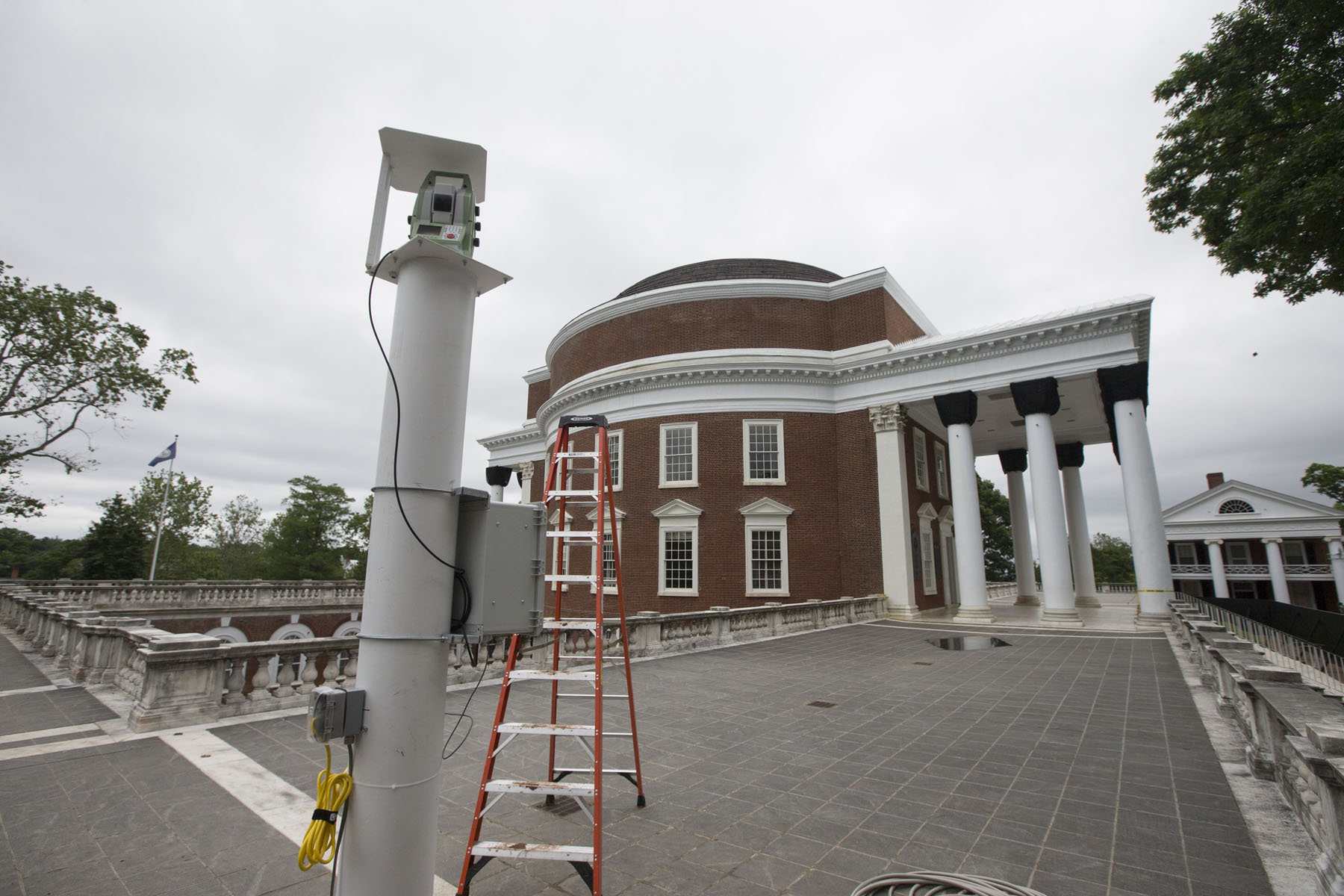As crews carefully excavate beneath the barrel of the University of Virginia’s nearly two-century-old Rotunda to install additional shoring for its foundation, lasers scan the structure to detect any movement of the building.
As crews carefully excavate beneath the barrel of the University of Virginia’s nearly two-century-old Rotunda to install additional shoring for its foundation, lasers scan the structure to detect any movement of the building.
The iconic Rotunda, the centerpiece of Thomas Jefferson’s Academical Village, is undergoing an extensive renovation, its first in nearly 40 years. The project’s contractor, Whiting-Turner, is excavating the east garden between the Rotunda’s wings to build an underground mechanical room, which will extend partially under the Rotunda. Once complete, it will house equipment for the Rotunda’s all-new fire and life safety, electrical and mechanical systems.
The brick barrel of the Rotunda was originally built directly on the ground, without a foundation; contractors are installing a 16-foot concrete foundation wall under the east walls of the barrel.
To prevent cracks in the historic walls, workers festooned the Rotunda with more than 130 prismatic targets, which are hit by precisely aimed laser beams every four minutes, 24 hours a day, seven days a week. The laser beams are invisible to the naked eye. The lasers, emanating from four units – two on the terraces, one on Pavilion II and one inside the barrel of the Rotunda – measure variations in the positioning of the building, alerting contractors and supervisors if the building shifts by as little as one-12th of an inch.
“If there is a shift by one-quarter of an inch, the work comes to a stop immediately,” said Jody Lahendro, the supervisory historic preservation architect on the Rotunda project for Facilities Management. “Everybody gets together to find out what happened and, if necessary, we have the material and the equipment stockpiled on site to stabilize the structure.”
He said the system has been activated by a tree branch dipping into the laser field and by workmen inadvertently breaking the beam.
The system was put in place in May, a month before the renovation work began, to monitor the ordinary building shifts and to set a baseline for normal movement.
“We see a lot of movements that we expected,” Lahendro said. So far, no serious problems have been detected.
Apart from the laser monitoring system, seven vibration sensors – two of them in Pavilion II – detect any damaging shaking of the building caused by construction activities. The University contracted with Soldata Corporation of Cuddy, Pennsylvania, for the laser and vibration monitoring systems, which cost nearly $500,000.
Monitoring historic buildings undergoing renovation is standard practice, Lahendro said. Laser monitors were used during renovation work on the state capital in Richmond and at the U.S. Supreme Court building in Washington, D.C.
Media Contact
Article Information
October 10, 2014
/content/high-tech-system-monitors-rotunda-s-stability-during-renovation

